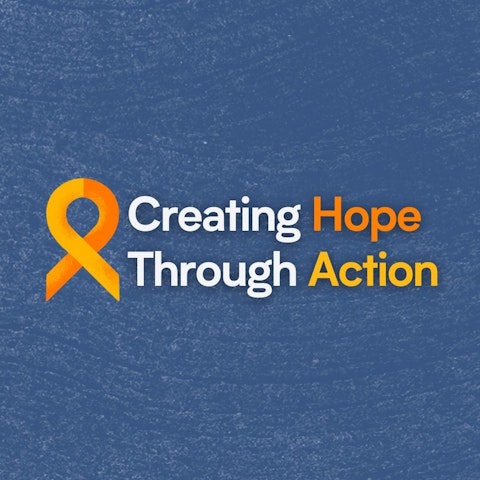
 Support us
Support us


It is an important week in Australia for us to collectively put the spotlight on the actions we can take together to prevent suicide and support people experiencing or impacted by emotional distress or suicidal behaviour. Friday, 10 September is World Suicide Prevention Day, with the theme of “Creating Hope Through Action”.
There is no doubt that it has been a challenging two years for our communities. Now more than ever it is important that we come together – not just to advocate for the necessary investments, services and supports required, but to also empower people to take action. To create hope through uncertainty. To elevate the right voices at the right time.
There will be a range of organisations putting the spotlight on suicide prevention this week and highlighting the actions we can take together as a sector and as a community. As organisations with a leadership role in public communication about suicide, Everymind, SANE Australia and Roses in the Ocean are joining together to call on media organisations, governments, our colleagues in the suicide prevention sector, community networks and organisations to create hope by focusing on ways to offer and provide help, stories of survival and listening to the people behind the numbers this World Suicide Prevention Day.
Research conducted by the University of New England in 2020 for the National Suicide Prevention Adviser outlined that in media and other public messaging, lived experience is often presented as anecdote to reinforce an ‘expert’ or clinical view or opinion, with limited coverage of people who have lived through a suicide attempt. The report called for “a greater focus on integrating lived experience into the service system and into our public narratives about suicide prevention”.
Rachel Green, CEO of national charity and service provider SANE Australia, said that including those with lived experience was one way we can start to address the stigma associated with suicide, and to progress much needed mental health and suicide prevention reform.
“At SANE Australia, we know that the best way to reduce stigma and to empower people to take action for themselves and others is to share real life stories of people who live with suicidal thoughts, or who have supported someone they care about.
“Our SANE Peer Ambassadors are generous with their experiences and their expertise – helping to address stigma and playing a critical role in advising on the design and delivery of our support services.
“We know through running the StigmaWatch program for more than two decades, the communication that people want to see is hopeful, is focussed on what action we can take, and includes those with real life experience.”
Australian data tells us that over 3,300 people die by suicide each year and approximately 65,000 people will attempt suicide. According to published Australian research, a further 450,000 people will be impacted as a family member, friend, colleague, teammate, first responder, neighbour or treating professional.
Bronwen Edwards, CEO of Australia’s leading lived experience of suicide organisation, Roses in the Ocean, said that we must look behind the numbers and do more to focus on lived experience of suicide.
“We often cite numbers and statistics associated with suicide, and even use unsubstantiated figures to highlight the scale and impact of the issue. But it is the stories behind the numbers, the stories of hope and resilience through adversity that is most important.
“We will never engage people to join our suicide prevention efforts by talking about numbers and policy alone. We need to invite people to understand the human experience of suicide – the despair, the strength and the hope – and allow them to learn from those who have first-hand experience.
“For our organisation, our national Lived Experience Collective and the networks of people across Australia we have the privilege of walking alongside and working with, creating hope through action is about designing our public communication and designing the service system with, and for, those with lived experience of suicide.
“For ten years we have supported people with a lived experience of suicide to find their voice, understand how their unique insights can be impactfully shared, and without exception we have experienced that it is their stories that actually change perceptions, attitudes and beliefs. It is their experience that creates hope for others who find themselves walking in the same shoes. It is their experiences that are shaping the promising future of suicide prevention in Australia.”
This is a view echoed by Graeme Holdsworth who has first-hand experience of recovery from a suicide attempt and has since dedicated himself to suicide prevention. He says that lived experience is needed at all levels to create the kind of change we need in suicide prevention.
“If we are ever going to get to the point of acceptance and inclusion, we still have a lot of work to do, and the voices from suicide attempt survivors is a large part of the answer.
“For World Suicide Prevention Day, my Hope in Action is advocating for people with lived experience to be involved at all levels, including senior levels and board positions, within suicide prevention organisations.
“Through sharing my own story, I want to give hope to people who are vulnerable, and that gives me hope that things will improve.”
Everymind has over two decades of experience working with the media, journalism education and the suicide prevention sector to promote safe and non-stigmatising media reporting and public communication about suicide. This has been complemented by work to establish the National Communications Charter and other community resources for talking about suicide.
Director of Everymind, Dr Jaelea Skehan OAM, who was instrumental in establishment of these programs, said the Australian media have been active partners in suicide prevention for decades, but the time was right to increase the focus on lived experience of suicide in reporting and other public communication.
“Our media in Australia have shown their willingness to report on suicide, but they are also responsive to the narratives and the talent that the suicide prevention sector puts forward.
“We know that reporting and other public communication has the potential for good, not just harm. Research shows that stories that feature people with lived experience of suicide and how they overcame their suicidal distress have been associated with reductions in suicide, and can encourage people to take action.
“We also know that sharing real stories and linking people to supports can really make a difference – across the media, our social media channels, through our workplaces and communities.
“For those with lived experience to be seen and heard, sometimes we need to privilege their voices over others. World Suicide Prevention Day presents a great opportunity to do this. There are diverse lived experience voices ready to be part of the discussion at the local and national level”
On Friday, to coincide with World Suicide Prevention Day, Everymind will be dedicating their social media channels (including Everymind, Life in Mind, and Mindframe) to amplifying the voices of those with lived experience of suicide. Everymind, together with SANE Australia and Roses in the Ocean invite others across media and the suicide prevention sector to do the same.
Tips for helpful ways to discuss suicide on World Suicide Prevention Day:
Useful links
Help-seeking information
Joint Statement World Suicide Prevention Day 2021 Final
Published: 8 September 2021